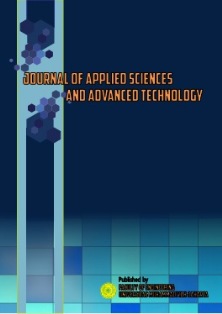The Backup Recovery Strategy Selection to Maintain the Business Continuity Plan
DOI:
https://doi.org/10.24853/jasat.1.1.23-30Keywords:
Analytical hierarchy process, Backup Recovery Strategy, Business Continuity Plan, Disaster recovery planAbstract
Indonesia must face the risks of volcanic eruptions, earthquakes, floods and tsunamis, destruction of its land areas, and resulting in damage to client and server computer systems. The demand for the information technology availability and performance becomes high. Disaster recovery plan is designed to ensure the vital business processes continuation in the event that a disaster occurs. The problem is how to make the best way in selecting backup recovery strategy based on the benefits to the cost ratio so as to minimize the business losses that will be caused by the failure of an application system. The research aims to make decisions that can help make certain parties take the best decision in choosing the backup recovery strategy selection for a business continuity plan in the University Trilogy. The method used is the multi-criteria decision making and analytical hierarchy process using the expert choice software. From the data processing results can be concluded that the first order is hot standby option 59.4%, followed by cold standby option 23.3%, then the choice of warm standby option 17.4%. The data inconsistency rate is 0.02, smaller than 0.1 as the maximum value of inconsistency ratio.Downloads
References
Bryan C. Martin, SANS Institute, 2002. Disaster Recovery Plan Strategies and Processes. As part of the Information Security Reading Room, 2002.
Cahyadi, Eddy, 2006. Review Business Continuity Plan Based on Quantification of Economic Value of Application System on Aviation Industry: Case Study at PT. Garuda Indonesia. The thesis final report of an academic research article at Magister Teknologi Informasi University Indonesia, 2006.
Carl, Neumann, 2003. Disaster Recovery Planning. Final Research Paper. Stevens Institute of Technology, 2003.
Faisal, 2010. Disaster Recovery Plan Information Technology Strategy on UICO Core System with Analytical Hierarchy Process Approach. The thesis final report of an academic research article at Magister Ilmu Komputer STMIK Nusa Mandiri Jakarta, 2010.
Faisal, 2015. Decision Support System Image Processing Software Selection with Multi-Criteria Decision Making Method and Analytical Hierarchy Process. The scientific academic proceeding, published in the Seminar National on Information Technology and Multimedia (SEMNASTEKNOMEDIA 2015), STMIK AMIKOM Yogyakarta, ISSN 2302-3805.
Indonesia Investments, 2017. Natural Disasters in Indonesia. https://www.indonesia-investments.com/id/bisnis/risiko/bencana-alam/item243.
Konsa, K and Kaie Jeeser, 2017. Preparing Museum Disaster Plan: Risk Ranking Through the Analytical Hierarchy Process. International Journal of History and Cultural Studies (IJHCS) Volume 3, Issue 1, 2017, PP 19-26 ISSN 2454-7646 (Print) & ISSN 2454-7654 (Online).
Marimin, 2005. Techniques and Applications of Decision-Making Some Criteria. PT. Gramedia Widiasarana Indonesia. Jakarta, 2005.
Otair, Mohammed and Aiman Al-Refaei, 2015. Cybercrime Fighting Readiness Evaluation Using Analytic Hierarchy Process. Proceedings of 48th the IIER International Conference, Spain, Barcelona, 11th December 2
015, ISBN: 978-93-85832-61-1. (Accessible 10 Dec 2017).
Saaty, R.W., 1983. The Analytic Hierarchy Process-What it is and how it used. Journal of Mathematical Modelling Vol. 9 no. 3-5, 1983.p. 161-176.
Saaty, T.L., 2004. Decision Making - The Analytic Hierarchal Process and the Analytic Network Process. Journal of Systems Science and Systems Engineering. Volume 13(1): 35.
Sharing Vision, 2008. Professional Workshop: Step by Step Approach Building Disaster Recovery Strategy and Procedure. A Framework for Developing and Reviewing Enterprise Disaster Recovery Management. Bandung, 2008.
Soedarmaji, Mas Mokhamad, 2000. Business Planning Based on Disaster Recovery due to Computer System Failure in One of Capital Market Management Company, Case Study of PT. Jakarta Stock Exchange. The thesis final report of an academic research article at Magister Teknologi Informasi Universitas Indonesia, 2000.
Wulandari, D.A., 2008. The IT Disaster Recovery Planning Strategy on Core Banking System with Analytic Hierarchy Process Approach: Case Study at PT. Bank Mega Tbk. The thesis final report of an academic research article at Magister Ilmu Komputer University Budi Luhur Jakarta, 2008.
Downloads
Published
Issue
Section
License
COPYRIGHT POLICY
The author(s) of an article published in the Journal of Applied Sciences and Advanced Technology (JASAT) retains ownership of the intellectual property rights in work (s).
PUBLISHING RIGHTS
The author(s) of an article published in the Journal of Applied Sciences and Advanced Technology (JASAT) have unrestricted publication rights. The authors give the Journal of Applied Sciences and Advanced Technology (JASAT) the right to publish the article and designate the Faculty of Engineering Universitas Muhammadiyah Jakarta Publishing as the original publisher of the article.
LICENSING POLICY
JASAT is an open-access journal that follows the Creative Commons Non-Commercial 4.0 International License (CC BY-NC 4.0), which states that:

Under this license, the reusers must give appropriate credit, provide a link to the license, and indicate if changes were made. Users may do so in any reasonable manner, but not in any way that suggests the licensor endorses users or their use.
Please take the time to read the whole license agreement (https://creativecommons.org/licenses/by-nc/4.0/). As long as reusers follow the license conditions, the owner cannot withdraw these freedoms. The following components are included under this license:
 Attribution: Users must provide appropriate attribution, including a link to the license, and indicate whether or not they made any modifications. Users are free to do so reasonably, but not in a manner that indicates the licensee approves of their usage.
Attribution: Users must provide appropriate attribution, including a link to the license, and indicate whether or not they made any modifications. Users are free to do so reasonably, but not in a manner that indicates the licensee approves of their usage.
 NonCommercial: Users may not use the material for commercial purposes.
NonCommercial: Users may not use the material for commercial purposes.












_2.png)


1.png)

2.png)
